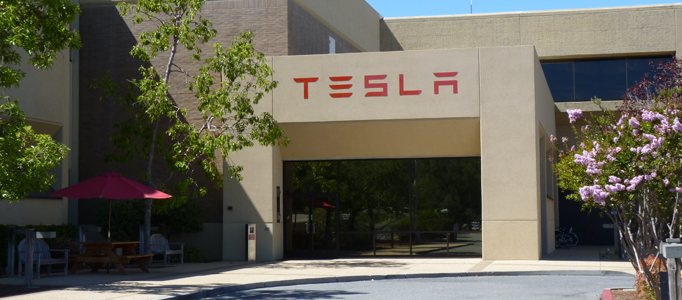Since I wrote the “Electric Cars – the Future is Now!” 3 years ago, the world of green cars has changed a lot. It’s not so much the technology that has changed – in many cases you’re still stuck with electric cars coming with the standard 60 – 100 mile range. It’s the public perception that has allowed the green motoring to take the next step forward.
It couldn’t have happened without the relentless and persuasive effort of green car bloggers, so I decided to put a Green Motoring Blog Top list together with a view to promote the great work these bloggers are doing.
They’re listed in alphabetical order – you can’t accuse me of favouritism! I asked the bloggers the following four questions as a light brain-storming exercise. Will any of these predictions come true? You’ll have to stick around to find out!
- Which technology will emerge as a winner in the next 20 years – electric cars, hybrids or something entirely new?
- What are the main obstacles for the alternative cars to go mainstream?
- What can governments do to propel the idea of green motoring or do you think they’re already doing enough?
- What is your background, how did you become passionate about environmental issues?
EVfleetWorld.co.uk – Alex Grant

Educated business customers are essential for the electric car manufacturers during the developing phase of the new (or well-forgotten) green car industry. EV Fleet World explores the uptake and shows the green motoring benefits for business fleets.
![]()
For now, conventional petrol and diesel vehicles will continue to dominate the volume of retail and fleet sales in the short term, as both are becoming ever-more efficient driven by carbon-based taxation. However, hybrid technology is now thoroughly established and electric vehicles are growing steadily, if best-suited to urban drivers.
The winner over the next 20 years, though, is looking likely to be hydrogen fuel cells. These are still driven using an electric motor, but generate their own electricity on board with water vapour as the only tailpipe emission. They also offer a familiar ownership experience, with refueling times measured in minutes instead of hours and a range far longer than current battery technology will allow.
Manufacturers are already leasing this technology to end-users, but it’s still expensive, there’s almost no refueling infrastructure to support mass-market appeal and separating hydrogen from water is an energy-rich process. We’re still a few years away from this being commonplace, but it’s potentially a very viable, renewable alternative to fossil fuels.
![]()
A lack of familiarity compared to well-established technology is a big issue. Lots of potential customers are put off by unknowns. For example, how well components will last, whether they’ll be able to use their heaters in the winter without cutting the range in half, what the residual values will be like and whether a new innovation will make their car obsolete in a few years.
There’s also a lot of fear – driven by some parts of the press – about running out of charge and being stranded in the middle of nowhere. Research has shown most drivers charge at home, but a network of public access charging points is vital for giving peace of mind and broadening the cars’ appeal. Existing technology doesn’t suit everyone, but how many cars can claim to be a one-size-fits-all solution to the world’s motoring needs?
But probably the biggest barrier is cost. Hybrid and electric vehicles tend to be more expensive than, say, an equivalent diesel and don’t necessarily offer much better fuel economy on paper. Economies of scale dictate that as demand grows and the range of vehicles broadens, costs should come down and public awareness will improve too.
![]()
Incentives are vital to get the market off the ground, and they don’t have to be financial. Norway has an established set of incentives in place, which make electric vehicles in particular a bit of a no-brainer against their conventional counterparts. A lot of this comes around tax breaks, but they’re also allowed to use bus lanes, and park and recharge in city centres for free.
It’s evidence that incentives don’t have to be expensive for taxpayers. Courier companies, for example, would be more likely to look into electric vehicles if the ability to dodge congestion by using bus lanes and stop closer to their destination using additional parking spaces. Time is money, too.
But the key with any incentives is consistency. For fleets, particularly, to adopt the technology they have to know it’ll add up not just this year but for up to five years. If the goalposts move, confidence will shift with it.
![]()
I’m an award-winning motoring journalist with a passion for new technology and nearly seven years’ experience writing about the automotive sector. The rise of the alternative car means it’s never been more interesting to write about this sector, with ever-more innovative ways to improve cars’ environmental performance arriving all the time.
Improving the environmental performance of road transport – and this goes beyond just reducing CO2 emissions – is absolutely vital. While alternative cars don’t suit everyone yet I’d like to think we can give a balanced view of the market as a whole, and our broad knowledge of the automotive sector and particularly the needs of the fleet industry helps us to do so.
EVObsession.com – Zachary Shahan

This site is brought to you by a serial pro-blogger Zachary Shahan, probably best known for CleanTechnica – one of the most revered environment publications in the whole blogosphere. EVobsession focuses on technology, research and promoting the benefits of green cars.
![]()
I’m pretty convinced electric cars will dominate. They are simply much more efficient than any other option. Once battery costs fall low enough (and they’re certainly faling fast), and production costs are lowered from economies of scale, and consumers get used to the electric option, I don’t see how they can’t take over the market.
![]()
I think the three biggest obstacles to electric cars (and alternative cars, in general) from going mainstream are: 1) widespread misinformation that scares consumers from switching away from gasoline-powered cars; 2) the natural reluctance of many people to try something new; and 3) the upfront cost of these more efficient cars (despite the fact that they will save many or even most buyers money within a few years). Of course, massive subsidies for gasoline-powered vehicles also don’t help.
![]()
They could properly price gasoline and carbon pollution. Barring that, offer better consumer incentives for purchasing electric vehicles.
![]()
I’ve been passionate about environmental issues since I was a kid. Since then, I have delved further by studying Environmental Studies and Sociology in college and City & Regional Planning in graduate school, as well as working in several green-related fields. Now, of course, I’m the site director of several green websites: CleanTechnica, Planetsave, Solar Love, EV Obsession, and Bikocity.
EVworld.com – Bill Moore

The EVWorld surprises the reader with depth and value of the content. In some ways Bill Moore is a visionary – he started EVWorld back in 1998 – when there were only a few daring electric car concepts around, and a year before Honda and Toyota released their very first hybrid cars on the market.
![]()
When we consider what the future of sustainable mobility may look like in the next 20 years, there are certain trends that are emerging: the re-urbanization central city cores being, perhaps, the most critical for reasons that have to do with shifting demographics, energy efficiency in an increasingly resource constrained world, and the perception of better job and education opportunities.
The automobile produced suburbia, but the automobile is an anachronism in the city: it is inappropriate technology for urban transportation applications. If you’re looking for a ‘winner’ in the next two decades, it likely will be the light electric vehicle, which we would classify as ranging from electric-assist bicycles to short-term carshare vehicles like the Toyota i-Road, Hiriko, Lumeneo Smera and Neoma and smart fortwo, with the inclusion of larger four-passenger models like the Renault ZOE and Bollore Bluecar. Most of these will not be privately owned, but shared vehicles.
Electric public transit buses, either fuel cell or battery will provide many with their daily intracity commuting needs, increasingly in the form of Bus Rapid Transit Systems with smaller, transit-on-demand feeder vehicles like the Rinspeed MicroMAX. There will still be a role for traditional cars, but they’ll be for those who by circumstance or choice continue to live in suburbia. These vehicles will be either hybrid or plug-in hybrid vehicles, increasingly running on cellulosic biofuels the closer we get to 2030.
GreenMotor.co.uk – Lem Bingley

Lem Bingley is a professional journalist and editor and that comes across from the quality green car reviews that are regularly posted on greenmotor.co.uk. He actually goes out there, drives the cars and relates the first-hand experience be it good or bad.
![]()
I hope that inventive alternatives to traditional cars – the successors to the Renault Twizy – will be plentiful by 2033. I suspect synthetic liquid fuels will have become important, such as methanol made using water, electricity and CO2. Methanol can be used for either combustion or fuel cells, and is a lot easier to transport and store than hydrogen. Hydrogen fuel cells will probably still be 10 years away in 20 years’ time, just like they are now.
![]()
To supplant conventional cars, new vehicles won’t simply have to match current capabilities; they will have to be better. Cost is probably the most important factor, and the balance will inevitably change when the global economy improves. Fuel costs are likely to go up beyond where they’ve ever been before.
![]()
Forget promoting ideas – governments are very poor at influencing hearts and minds. The most important thing governments can do is to ensure we have a greener electricity grid. Our infrastructure is something politicians have a great deal of influence over. Innovations in transport can spring from abundant renewable electricity in multiple forms.
![]()
I earned a postgraduate degree in engineering 20 years ago. I’ve forgotten 90% of what I studied but what remains is a strong belief in the importance of efficiency – making the best use of the materials available on a small and overpopulated planet.
InsideEVs.com – Lyle Dennis, Jay Cole

The material on InsudeEVs.com is conveniently categorised so that visitors can always find what they’re looking for. They are renowned for their plug-in sales scorecards reporting the electric car sales in North America.
![]()
We are fully behind/support/believe plug-in electric cars as the sole end game of passenger vehicles.
![]()
The biggest obstacle for fully electric cars is the range they can provide and the availability of the charging infrastructure when a re-charge is needed. PHEVs (plug-in hybrids) eliminate these range issues but aggravate the second obstacle, cost. Unfortunately, there is no silver bullet for these problems, other than being patient, encouraging adoption, and waiting for the technology to catch up to the expectation of the consumer.
![]()
We do not think any further incentive is necessary; in fact current incentives may hurt the industry in the long run. However, removing the barriers to entry on electric cars, and giving incentives and/or forcing regulations onto OEMs, is key to plug-ins gaining traction in the market as we wait on technology to bring plug-ins past cost/functional parity with tradition petrol operated cars.
![]()
Lyle’s mission is to raise awareness of green motoring. He’s been at it for over 5 years and has launched several internet publications ever since. Jay is a talented journalist known to be able to extract the truth behind car news.
NextGreenCar.com – Dr Ben Lane

Nextgreencar provides the visitor with a way to compare green cars across various technologies and drivetrains. Developed by Dr Ben Lane, the unique Green Car Rating scores the cars on a scale from 0 to 100, zero being an ideal green vehicle and 100 being an ultimate gas-guzzler.
![]()
At Next Green Car, we are in little doubt that the electric car is on its way and that the automotive sector is fully engaged with the development and commercialisation of high quality EVs. What we are less sure about is exactly what type of electric drive-train will be the eventual ‘winner’ or, as is more likely, what range of technologies will power mainstream vehicles by 2050 and beyond.
Our best technology forecast is that by 2050 more than 50% of new car and van sales will be plug-in vehicles, with power-trains including a range of fully electric and plug-in hybrid options with batteries sized to match requirements. We also see hydrogen fuel cell vehicles as playing a role alongside battery EVs, possibly being used for medium van and small truck applications.
![]()
Dr Ben Lane is Managing Editor responsible for site content and the Green Car Rating methodology. His career has spanned both academic research and independent consultancy (Ecolane) in technology and the environment and has worked within both the public and private sectors.
Melanie Shufflebotham is responsible for Sales & Marketing at Next Green Car. Melanie has over twenty years experience in the area of technology and marketing and has held posts in product management, Internet marketing and business development.
John Ironmonger is responsible for news and data content. John studied Physical Geography at Southampton University, graduating in 2008. At University, he focused his studies on issues associated with climate change, and issues of environmental sustainability. John began working with Next Green Car in 2009.
PluginCars.com – Bradley Berman

48,000 fans on Facebook cannot be wrong. PluginCars.com offers a tremendous value for the car buyer. Their in-depth consumer guides cover a variety of topics starting from buying your first electric car to understanding the batteries and the technology. They also have a popular community discussing various green car issues.
![]()
While all vehicles are becoming more efficient and less polluting, cars and trucks powered by electricity have a few key advantages. Electricity is ubiquitous. Electric motors are very efficient. And cars powered by those electric motors offer a great ride–lots of torque, low center of gravity (for superb handling), and swift silent acceleration. At this stage, batteries that store energy for these cars are still relatively expensive and they offer relatively limited driving range. As costs come down and driving range goes up, EVs will become more widely adopted by mainstream buyers. It’s an inevitable process. The shift has already begun, and even more exciting times are just around the corner.
![]()
I have been closely monitoring the rollout of greener cars since 2002, when I founded HybridCars.com. I continue to pursue this passion via my work at PluginCars.com, The New York Times and other publications. Automobiles offer extraordinary levels of mobility (and fun). If that is continue, we must find creative solutions to maintaining the level of mobility, by adopting more efficient vehicles, as well as diversifying transportation by using different modes of travel, including public transportation, biking and huffing it by foot.
PureGreenCars.com – Blagojce Krivevski

The PureGreenCars.com stands out as a source of fresh news and stats. They’re also monitoring the corporate kitchen behind the whole green car movement, so if there’s a new investment happening or if someone releases latest sales figures, PureGreenCars.com will publish it along with valuable commentary.
![]()
The car industry is exploring three different options in its pursuit of greener motoring: hydrogen, plug-in hybrids and electric vehicles. I personally believe in hydrogen future, but I think that in next two decades plug-in hybrids will dominate the market.
![]()
Right now “zero-emission” cars face two main challenges: refuelling and cost. There is only a handful of hydrogen fuelling points in the UK and the first hydrogen cars are relatively expensive. Electric vehicles are closer to the mainstream and there are now several thousand recharge points in the UK, but the electric and plug-in hybrid cars that will be released over the next couple of years are expected to be priced about £5,000 to £10,000 more than comparable petrol alternatives. In addition, the fact it can take up to eight hours to recharge the battery, makes longer journeys difficult.
![]()
I think that the government should continue with plug-in car grant scheme that offers 25% off the price of certain electric cars up to a value of £5,000. What about emissions from power plants, whose energy the cars ultimately use? It depends on your definition of “zero emission”. Electric cars produce no emissions when you drive them, while plug-in hybrids produce no emissions when using an electric motor for short journeys, and hydrogen cars emit only water vapour.
There is a carbon footprint associated with the electricity powering electric cars and the energy used to produce hydrogen. But it stands to reason the overall carbon footprint of electric vehicles will be lower, as it is far more efficient to generate electricity at a power station and transmit it to a car than it is to extract, refine and distribute oil before burning it in an internal combustion engine. Moreover, the carbon footprint of electric and hydrogen cars will fall over time as countries shifts away from fossil fuels towards renewable energy.
![]()
Blagojce Krivevski is a physicist, currently a Physics teacher at Kuzman Šapkarev – a high school in Macedonia.
TheGreenCarWebsite.co.uk – Faye Sunderland, John Simpson

We tend to forget that a car doesn’t have to have an electric drivetrain in order to be considered green. There are plenty of ICE cars that you can drive without making too much of an impact on the environment. Thegreencarwebsite reminds us about that by regularly compiling top green car lists including all the modern petrol and diesel models that can be bought now.
![]()
Over the next twenty years, we expect that the electrification of the car will be the major trend in the motor industry; be it fully electric, range-extended, hybrid, plug-in hybrid or even just stop/start cars. Fuel cell vehicles will also begin to make inroads into the market, although they will be someway behind the increasing use of battery models.
![]()
The cost to buy and convenience of refuelling will be the major hurdle to uptake of alternative-fuelled vehicles in that time, and for those that are really desperate to stop burning their money on petrol, we expect they’ll turn increasingly to car sharing and car clubs.
![]()
The Government has to play a part, particularly if it really wants to get fuel cell vehicles onto the road in a real capacity, there will be a need for serious investment in infrastructure, the like of which electric cars have already benefitted from.
![]()
I’ve personally always been a secret, tree-hugging hippy, so when we set up TheGreenCarWebsite.co.uk in 2007, I was keen to jump in and start writing for the website. It’s been a privilege to watch the car industry go through an essential revolution to reduce its emissions. I enjoy the opportunity to celebrate the achievements made in developing better transport solutions, fit for tomorrow’s motorists. The technology excites me and I love to share that with our readers.
This top list is by no means comprehensive or finalised. It’s a constant work in progress and I hope to welcome more publishers on board in the nearest future. If you want to nominate a blog for inclusion in the list of Top Green Motoring Blogs, please let me know via Twitter.






 Facebook
Facebook Twitter
Twitter Instagram
Instagram LinkedIn
LinkedIn Youtube
Youtube